#urban birds
Text
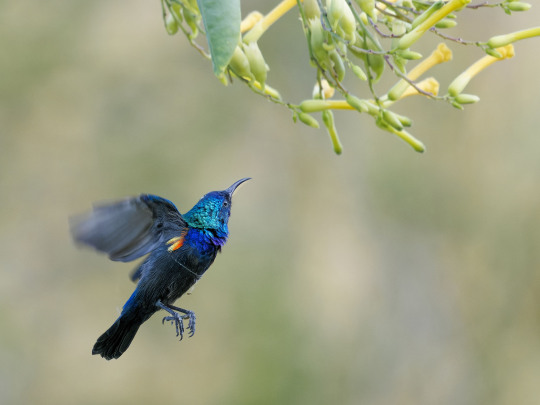

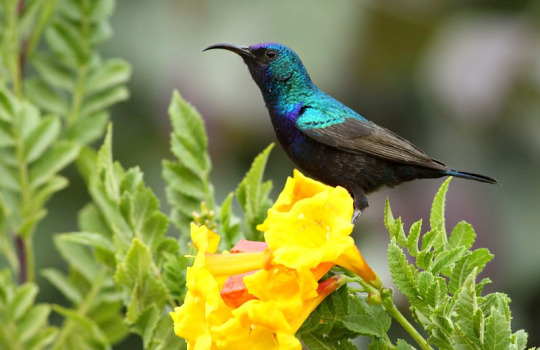
The Palestine Sunbird Persists
The Palestine sunbird, also known as the orange-tufted sunbird (Cinnyris osea) is the national bird of Palestine, and often seen as a symbol of resistance and hope. This species occurs in dry climates, particularly desert, scrubland, and savannahs, but can also be found in orchards and gardens where flowers are abundant. In addition to the Levant, C. osea occurs throughout the southwest cost of Saudia Arabia and the coasts of Yemen and Oman in the south.
C. osea is a small bird, 8 to 12 cm (3.1-4.7 in) long with a wingspan of only 14 to 16 cm (5.5-6.2 in). Males weigh on average 7.6 g (0.26 oz) and females are slightly smaller, at about 6.8 g (0.24 oz). Males are quite easy to identify due to their striking plumage; their feathers are iridescent, appearing dark until they shimmer glossy blue or green, with orange tufts at the side of the breast. In contrast females are fairly drab; grey-brown with a lighter underside. The beaks of the Palestine sunbird are also noted for their distinctively long and curved, which they have developed to efficiently feed on nectar.
Although not directly part of the hummingbird family, the Palestine sunbird shares many similarities with the group. Its diet consists of nectar, and is supplemented with insects. Their tongues are long, and brush-like, and the shape of their beak allows them to reach down to the base of the flower. For flowers that are , they will use their sharp beaks to pierce the side and access the nectar directly. All this is done at very high speeds, but unlike hummingbirds the Palestine sunbird cannot hover in place, and must land in order to feed. Because of their primary reliance on nectar, the orange-tufted sunbird is an important pollinator in its native region. Adults are rarely predated upon, but eggs and young are often targets for lizards, snakes, and birds of prey.
Reproduction begins in June, and continues through October. Males establish and defend territories, and court females by singing to attract a potential mate, then chasing her until she perches to signal her acceptance. Following the pairing, the two construct a purse-like nest, sometimes with a porch-like structure, that hangs from a branch. In this nest, 1-2 eggs are laid, and are incubated primarily by the female, while the male provides her food. The eggs take 13 to 14 days to hatch, and chicks are taken care of by both parents for an additional 14 to 21 days. Individuals can live up to 5 years in the wild.
Conservation status: The Palestine sunbird has a large range and population, and is thus considered Least Concern by the IUCN. Its primary threat is habitat loss due to agriculture and urban development.
If you send me proof that you’ve made a donation to UNRWA or another organization benefiting Palestinians, I’ll make art of any animal of your choosing.
Remember, the donation can be in any amount– every dollar counts!
Photos
Jorrit Vlot
Dula Alhashimi
Rana Hijawi
#Palestine sunbird#Passeriformes#Nectariniidae#sunbirds#perching birds#birds#deserts#desert birds#scrubland#scrubland birds#savannah#savannah birds#urban fauna#urban birds#middle east#animal facts#biology#zoology#ecology#free palestine
827 notes
·
View notes
Text

18.4.2018
#urban nature#urban wildlife#wildes wien#vienna#birding#wien#wild vienna#urban birds#birds#birdwatching#wiener vögel#ari fink photography#18.4.2018
20 notes
·
View notes
Photo

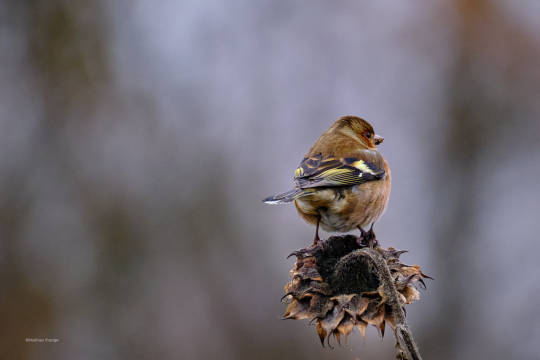
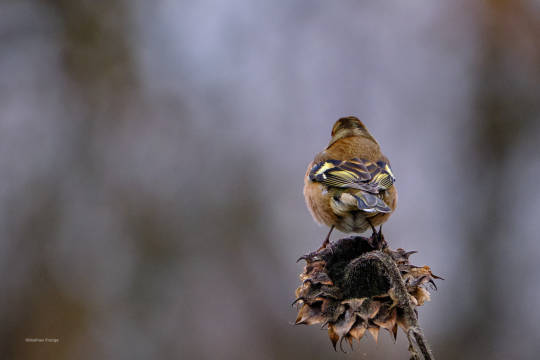


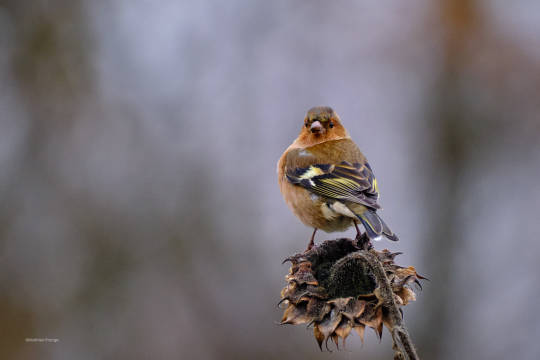


Tss, tss - always these photographers sneaking up from behind
#photographers on tumblr#original photography#chaffinch#Buchfink#bird watching#birding#urban birds#nature in the city#Hamburg#Loki-Schmidt-Garten#Botanischer Garten der Universität Hamburg
303 notes
·
View notes
Text

#urban birds#ibis#bin chicken#trash animals#art#artists on tumblr#book of kells#digital art#celtic#celtic art#illuminated#knotwork#stylised#birds#australian animals#australiana#conservation#urban wildlife#urban animals#Australian white ibis
37 notes
·
View notes
Text
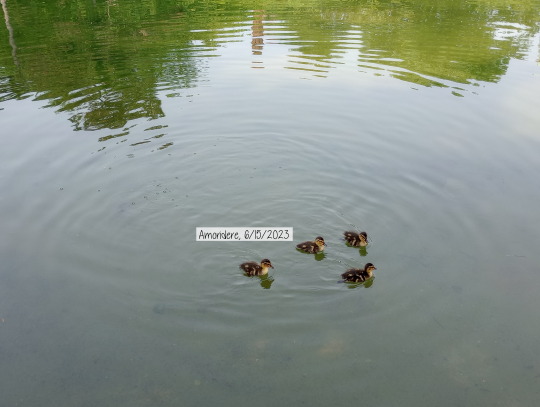
"Li'l Mallards"
There were actually more than four but I could only snap a pic of these four.
Little adorable, spirited things.
#Ducklings#Mallards#ducks#eden park#cincinnati#cincinnat parks#summer#mobile photography#moto g stylus 2023#nature#urban birds#some wholesomeness for you timelines#ran out of things to post#birds#waterfowl
11 notes
·
View notes
Text


11.29.2022
#guys check this out HES SITTING ON A GRAVESTONE#SO FUCKING COOL#my photography#nature photography#birdwatching#urban birding#urban birds#red tailed hawk#buteo jamaicensis#raptors#birds of prey#Boston birding#boston common#hawk#mother nature#birdblr
47 notes
·
View notes
Photo

Happy world sparrow day
I just found out it's world sparrow day (20-03-2023). Apparently, the aim is to raise awareness of the plight of house sparrows in particular and urban birds in general. Unfortunately, I don't have any photos of house sparrows (note to self) so here is a tree sparrow which are also in decline.
#world sparrow day#sparrows#tree sparrow#bird in a bush#urban birds#nature#nature photography#nature lovers#nature addict#wildlife#original work#original photograph#original content#all my own work#photographers on tumblr#rspb#rspb love nature#rspb bempton cliffs#giving nature a home
13 notes
·
View notes
Video
youtube
Wildes Wien: Amsel und Spatz
Quelle: Ari Fink Photography
#ari fink photography#birding#birdwatching#Turdus merula#Passer domesticus#8.1.2024#amsel#spatz#urban birds#urban wildlife#wildes wien#wild vienna#wiener vögel#photo diary#barbara zanotti#phototagebuch
2 notes
·
View notes
Video
youtube
kookaburras with birds singing in the background. #kookaburras #birds #y...
#youtube#bird watching#birds#birds feeding#wildlife#Australian WildLife#cute#women#beauty#Summer#wildlife documentaries#urban#urban birds#birds singing#beach life#season#christmas holiday#relaxing#Christmas ideas
2 notes
·
View notes
Text
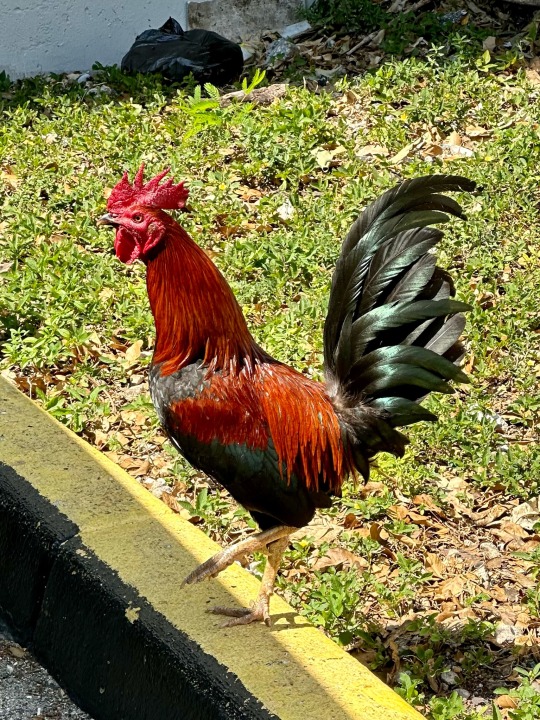
Meanwhile, in downtown Miami.
7 notes
·
View notes
Text

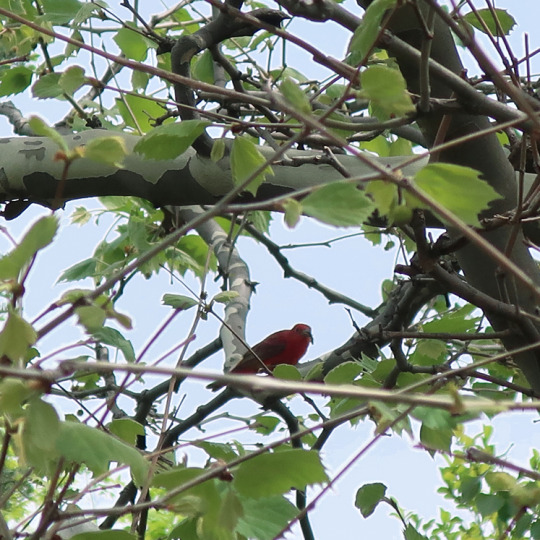
Appears to be a male summer tanager. Their range doesn't seem to have historically been this far north, but 😬😬 (this picture was taken at the end of a serious heat wave)
#bird#birds#wildlife#birdphotography#nature#birds captures#birdwatching#bird brilliance#birblr#urban birding#urban birds
34 notes
·
View notes
Photo


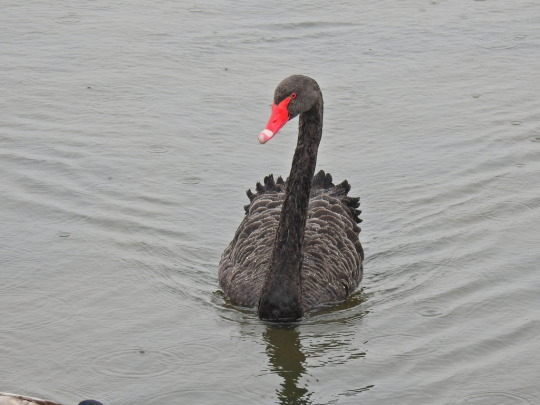
Surprising Black Swans
A popular ornamental waterbird in Europe and North America, the black swan (Cygnus atratus) is a species of swan endemic to Australia and New Zealand. In both their native and introduced ranges they can be found near bodies of fresh or salt water, especially lakes and wetlands with plenty of aquatic vegetation. The species is highly nomadic, and migrate based on yearly rainfall patterns.
Black swans are the second largest swan species, with a maximum weight of 9 kg (19.8 lbs) and a wingspan of 2 m (6.6 ft). Despite being smaller, black swans have the longest neck of any swan. Males, also known as cobs, are slight larger than females-- aka pens. As their name suggests, C. atratus has black plumage, although the flight feathers on their wings are white. The beak is a bright red with a white stripe, thought to be indication of an individuals health and sexual maturity.
Like all swans, the black swan mates for life. In addition to their high fidelity rates, C. atratus is also unique for its high rates of homosexual couples; about 25% of pairings are between individuals of the same sex (primarily males). These mates are known to steal eggs from other nests or form temporary ‘throuples’ with a member of the opposite sex, and some research has shown that homosexual couples are more than twice as likely to successfully raise their young as heterosexual couples.
The mating season for black swans occurs from February to September. While pairs are generally solitary, groups will nest in the same area to increase the chances of finding a mate and decrease the risk of predation. Pairs form when one an individual approaches another and initiates a ritual known as the Triumph Ceremony, in which the individual extends their wings and calls out. If the mate is receptive, they will repeat the gesture, and the pair will then go through a synchronous dance to solidify their pairing. This ceremony is repeated multiple times throughout each breeding season to strengthen the pair’s bond and affirm that between parent and chick.
Females lay 5 or 6 eggs in a clutch, and will alternate incubating them with her partner for 35 to 48 days. After hatching, the young- also known as cygnets- are fairly precocial but will stay in or near the nest for 2 to 3 weeks. It takes up to 6 months for them to completely lose their grey down and grow their adult plumage, though they remain with their family units for up to 9 months. Once they have fully fledged, juveniles join groups of other cygnets for 1-2 years, at which point they become sexually mature.
Black swans can present an intimidating threat to potential predators, so there are few animals that attack fully grown adults. However, eggs and young cygnets can be a target for ravens, birds of prey, and rodents. C. atratus themselves are herbivores and feed primarily on aquatic vegetation.
Conservation status: the IUCN has classified the black swan as Least Concern, and their native populations are stable.
If you like what I do, consider leaving a tip or buying me a ko-fi!
Photos
Damian Shaw
Richard Tommy Campion
Susan Marley via iNaturalist
#black swan#Anseriformes#Anatidae#swans#water fowl#fowl#water birds#birds#freshwater fauna#freshwater brids#lakes#lake birds#wetlands#wetland birds#urban fauna#urban birds#oceania#australia
315 notes
·
View notes
Text
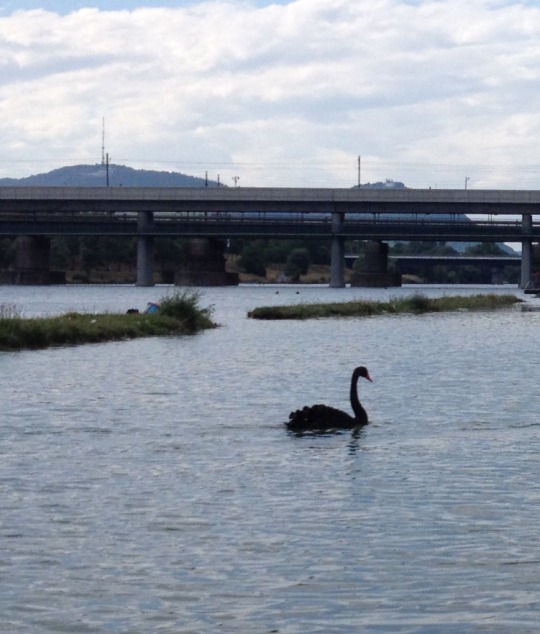
20.7.2015: Black Swan
#urban nature#urban wildlife#wildes wien#vienna#birding#wien#wild vienna#urban birds#birds#birdwatching#wiener vögel#schwarzer schwan#black swan#20.7.2015
4 notes
·
View notes
Photo
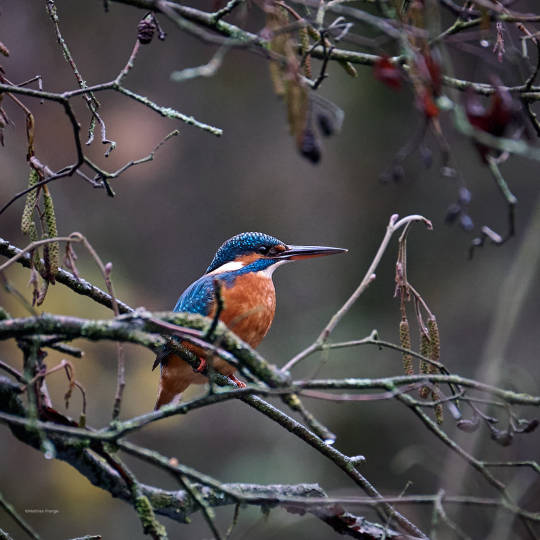
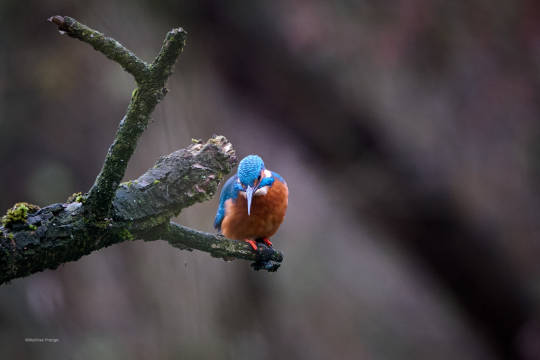
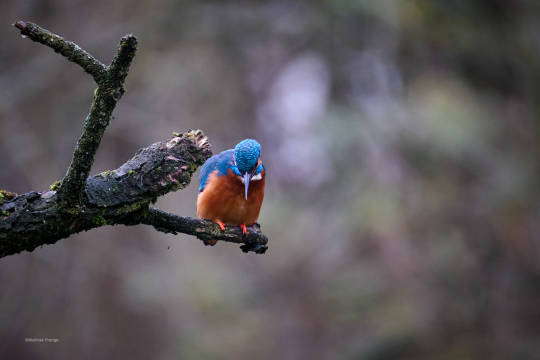
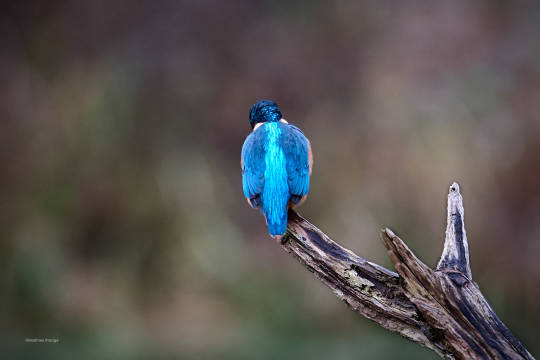




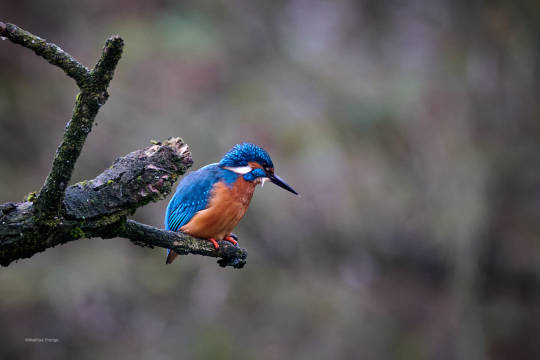
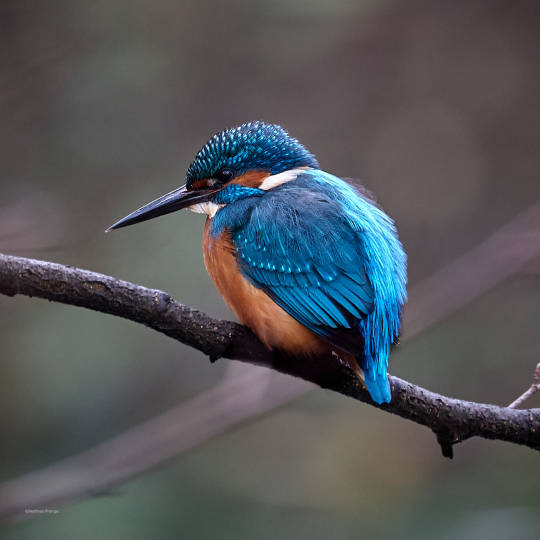
The kingfisher in a photo mood. And a grey day under heavy clouds becomes beautiful😀
#photographers on tumblr#original photographers#common kingfisher#birding#bird watching#urban birds#hamburg#nature in the city#Eisvogel
244 notes
·
View notes
Text
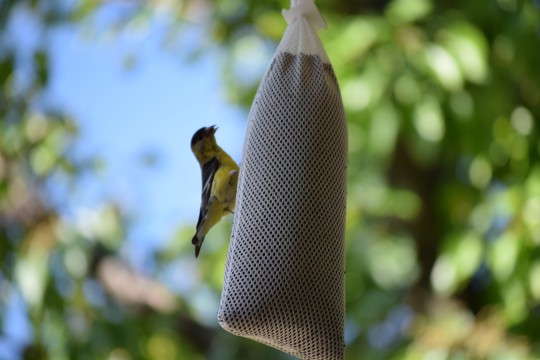
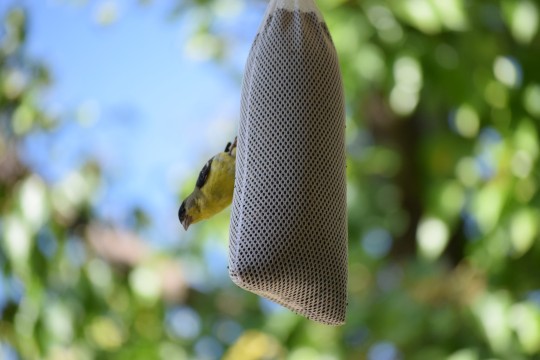
Tiny American Goldfinch visitors
4 notes
·
View notes
Video
youtube
1.9.2022: Wildes Wien: Spatzenbad Quelle: Ari Fink Photography
#sparrows#birds#birding#birdwatching#wiener vögel#spatzen#passer domesticus#video du jour#video des tages#video of the day#video diary#urban wildlife#urban nature#urban birds#1.9.2022#ari fink photography
2 notes
·
View notes